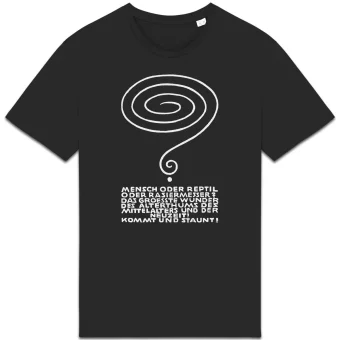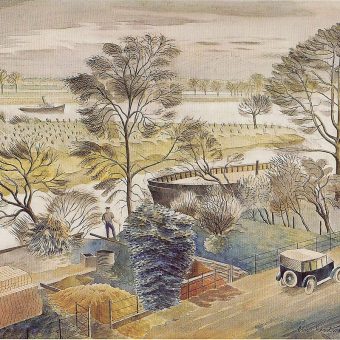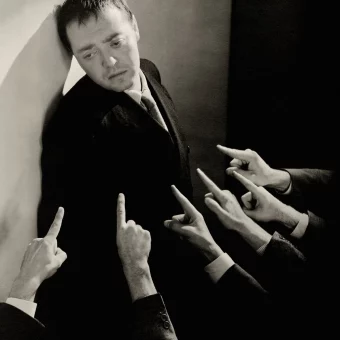“The tree which moves some to tears of joy is in the eyes of others only a green thing which stands in the way. As a man is, so he sees.”
– William Blake
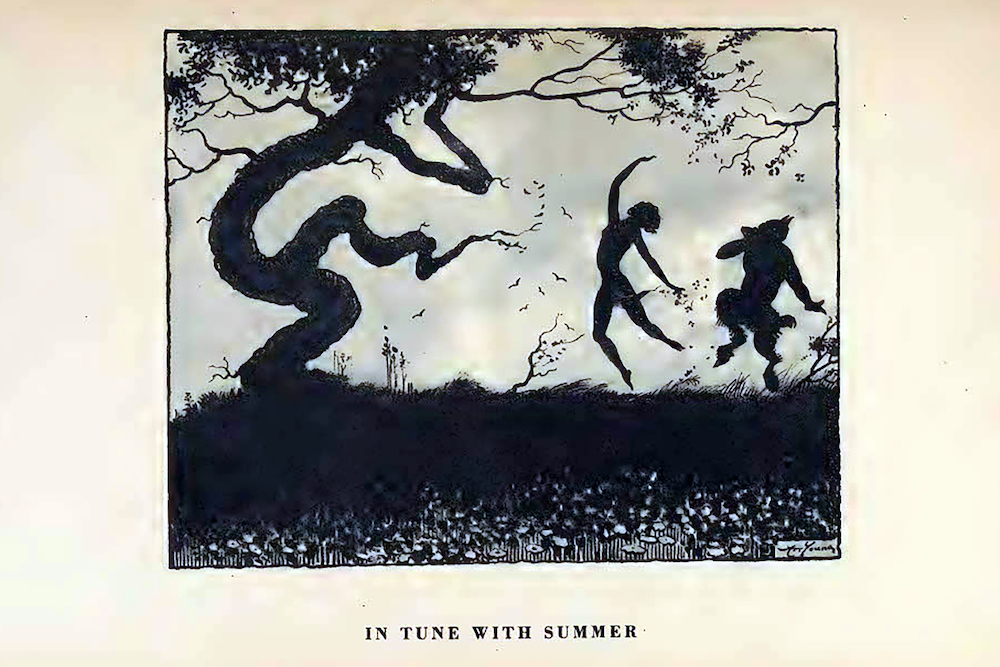
Arthur Henry Young – better known as Art Young (January 14, 1866–December 29, 1943) – saw humanity in the silhouettes of trees seen in the darkness. He compiled his drawings in the book Trees at Night.
Young is best remembered as a political cartoonist of great wit and a strong sense of social justice who worked as one of the core editors and artists of The Masses, a socialist bohemian publication. During the First World War, when in 1917 Young was tried for treason alongside journalist and communist John Reed (October 22, 1887 – October 17, 1920) and his fellow writer and political activist Max Eastman (January 4, 1883 – March 25, 1969), his colleagues at The Masses, the prosecuting attorney couldn’t help stating that “everybody loves Art Young”.
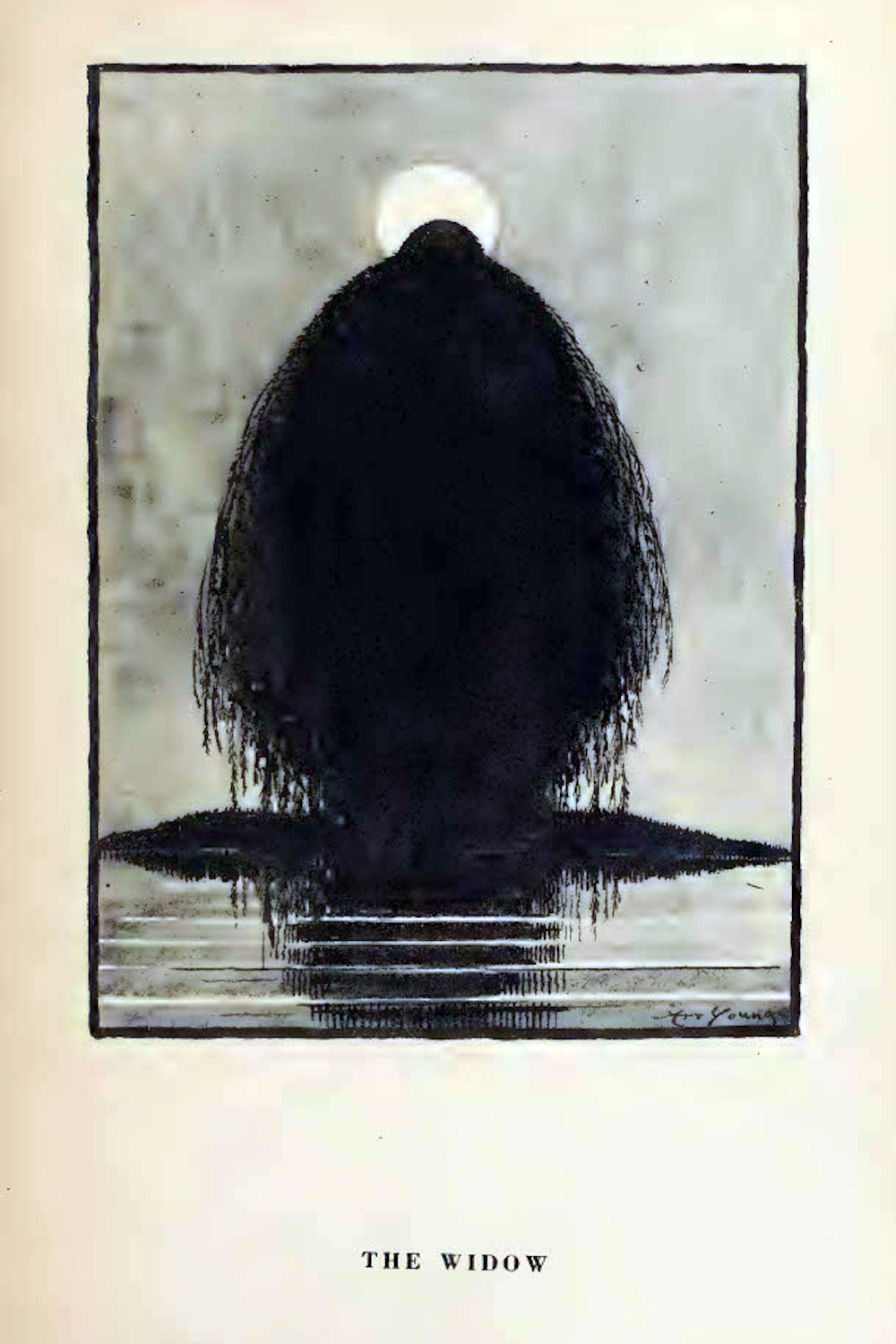
Given Young’s political sensibilities it was surprising, not least to him, that his black-and-white drawings of trees first appeared in the very popular and rather staid Saturday Evening Post. He recalls in his autobiography:
I knew, of course, that my kind of propaganda would not appeal to the makers of this magazine with its editorial devotion to Big Business and Big Profits. But I thought of something else which might find favor there. For a long time I had contemplated a series of pictures to be called Trees at Night. Often I had made sketches toward this end, after walks under the stars on the roads near my place in Connecticut.
The first sheaf of these pictures — eleven of them, as I remember it — were sent for approval, and I got a prompt acceptance. After a few were published, I was asked to draw additional ones. For more than a year the series ran, usually every other week.
My conception of trees showed them as fantastic, grotesque, humanized, or animalized, with trunks, limbs, and foliage tossed in gayety or inert and solemn against the night sky. They were not propaganda as that term is generally understood, but I have heard people who liked them say they read sermons in them all. For this series I received $75 each. I have a large scrap-book filled with complimentary letters, poems, and tree-ideas evoked by these drawings.
One of the best of my tree drawings occupied a double page in Life. I have always had a hopeful outlook — even when everything seemed lost. Nevertheless, as an onlooker I had seen so much in human life that revealed the pathos of hope, that I had to put the theme into a picture. Among other tragic hopes I had seen was an old man and his wife living in poverty, but holding onto stock in one of those kid-’em-along silver mines that they thought might some day bring them joy. In my picture this forlorn old man is out on a bleak hill with his hope symbolized as a dead tree. With a sprinkling pail he waters its roots. The caption, as published in Life, was: “Hope springs eternal in the human breast.”
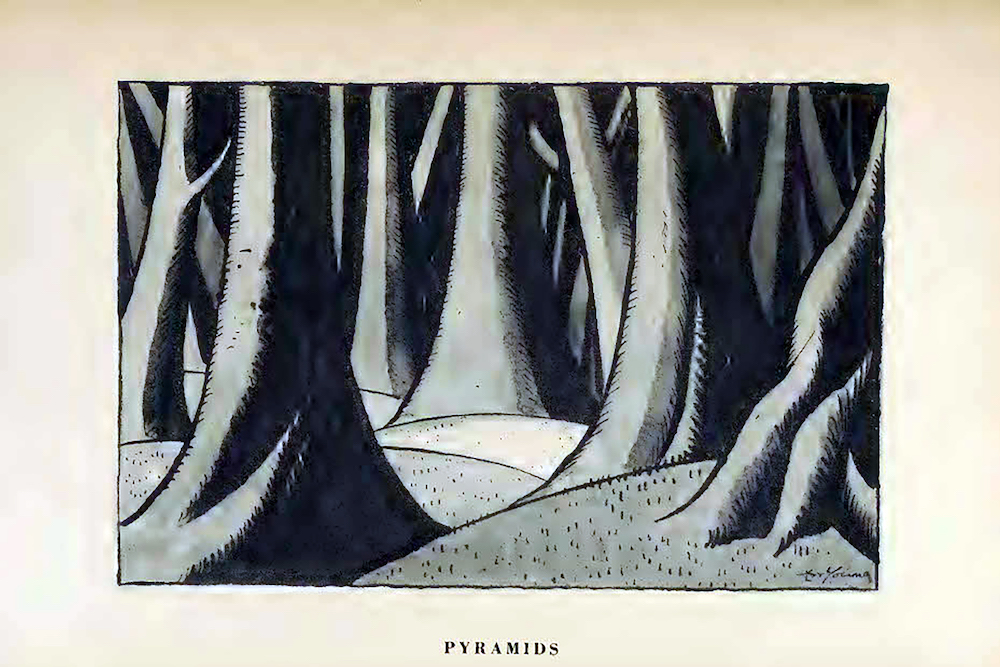
In the book Art Young explains why trees fascinated him:
In common with most people of artistic perception, I like trees. While looking out of my window toward the wooded hills one summer night, a caravan of camels seemed to be humping along the sky. They were trees of course but enough like camels to key my imagination up to discover other pictures in the formation of foliage. The rest of the summer nights I enjoyed hunting for tree pictures against the light of the sky or thrown into relief by the glare of automobiles, and drawing them next day. It seemed to me that this silhouette handling of trees at night had never before been done by any artist. I felt that I had discovered something.
After the caravan, I saw “a woman and a fan” and other subjects followed. Any night I could walk or ride along the road and see interesting silhouettes made by tree forms, many of them so clearly defined as to need no improvement on my part. But aside from the appearance of a tree by day or night, is it not kin of the human family with its roots in the earth and its arms stretching toward the sky as if to seek and to know the great mystery?
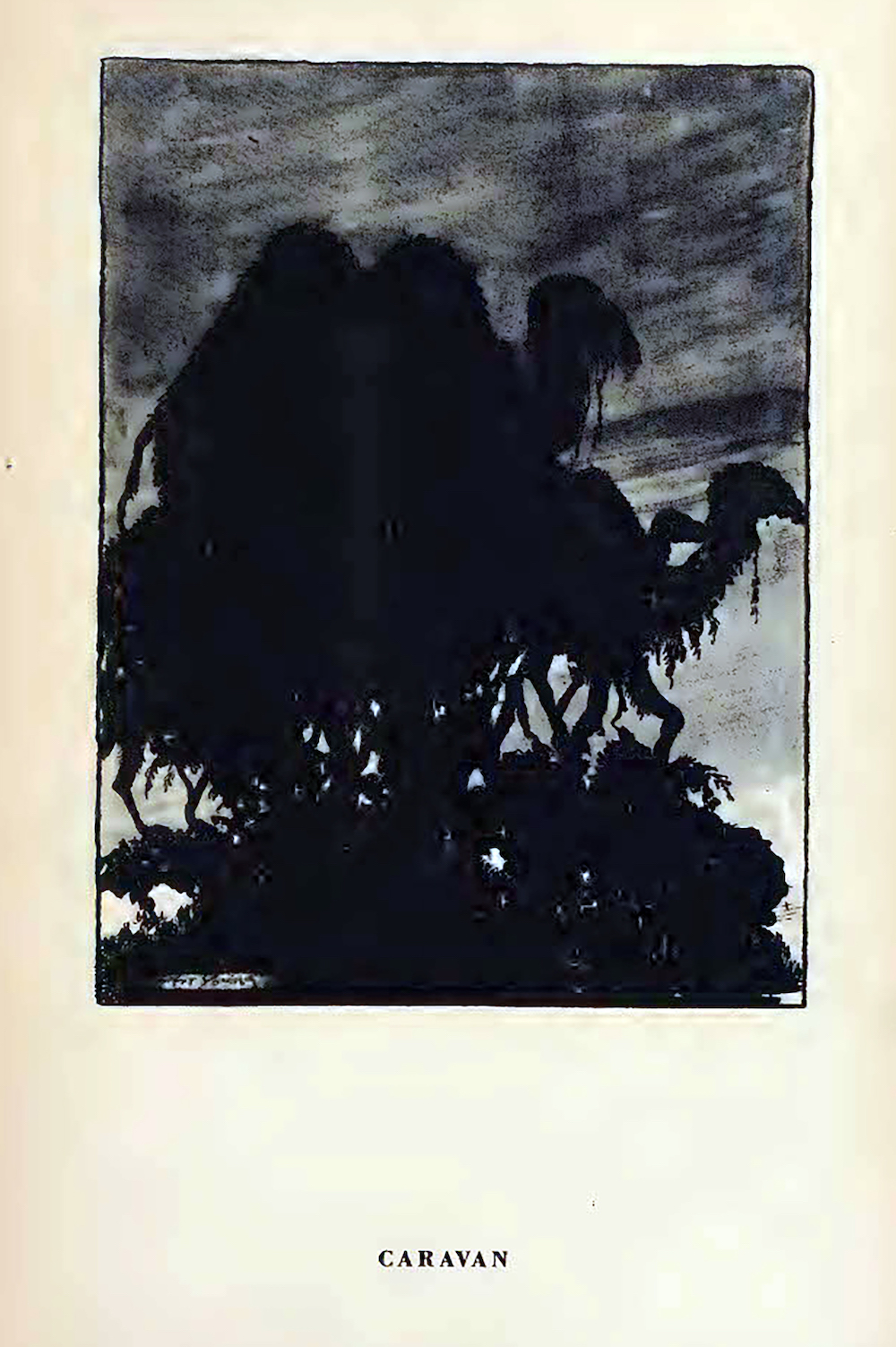
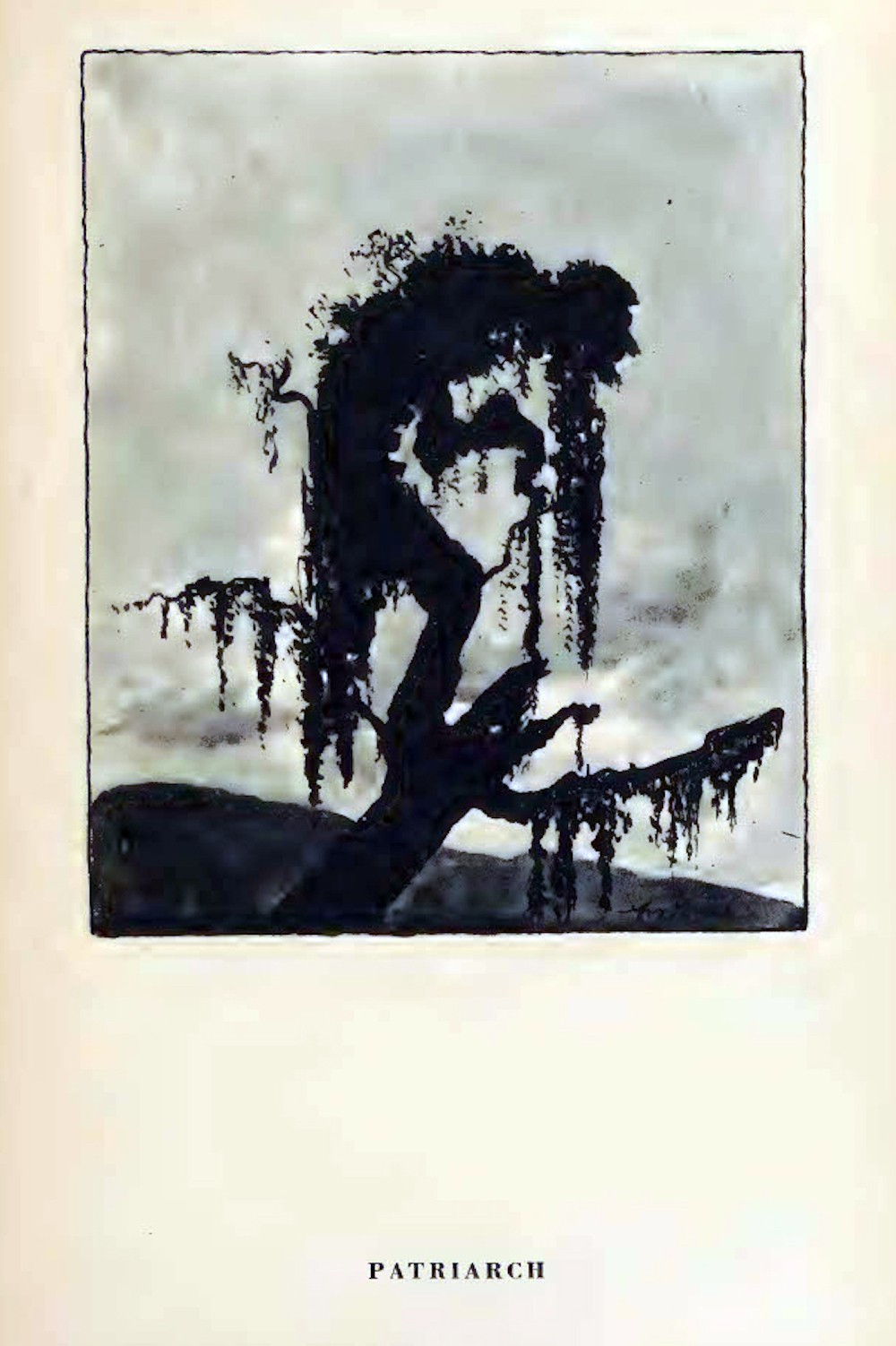

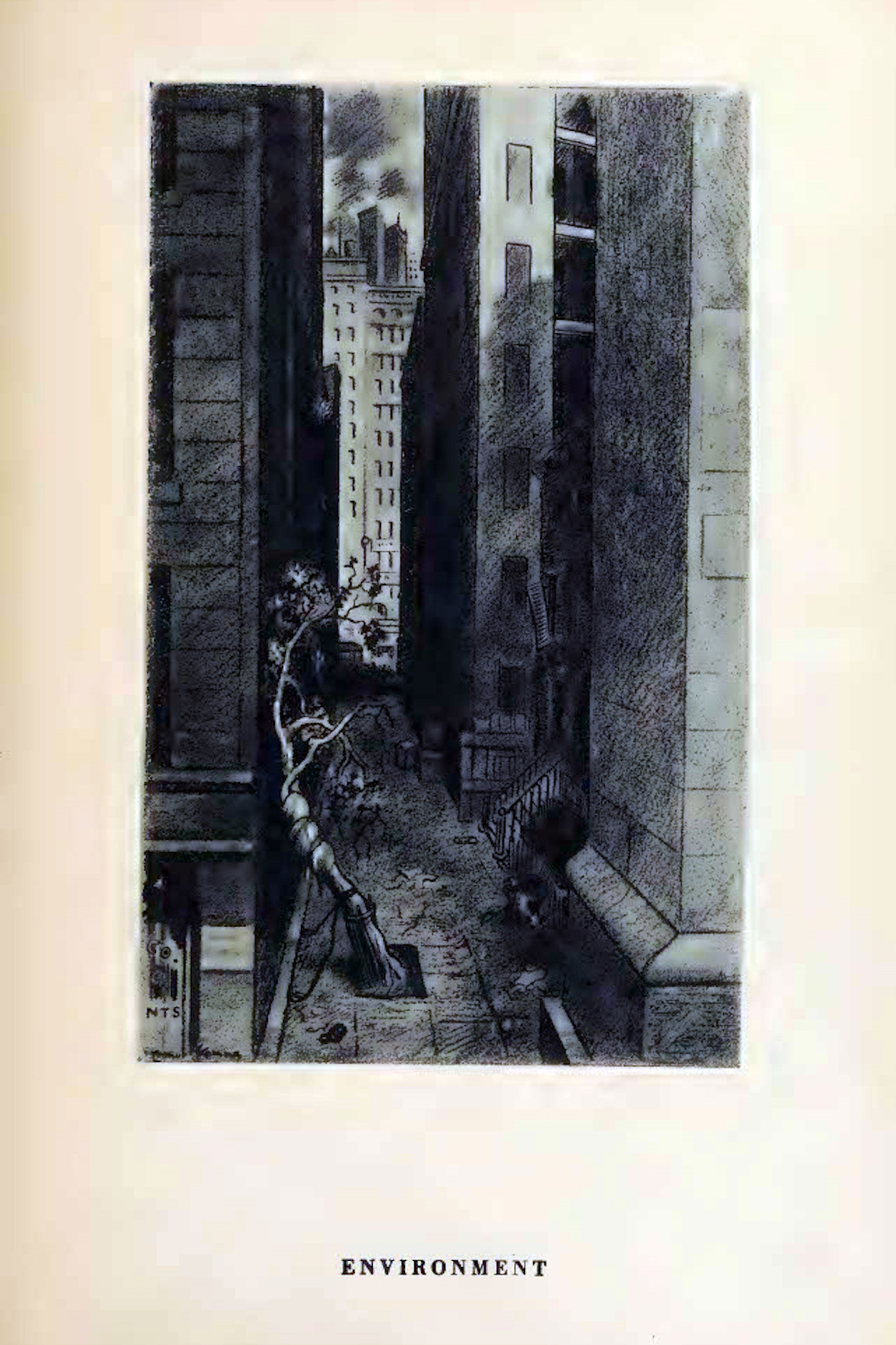
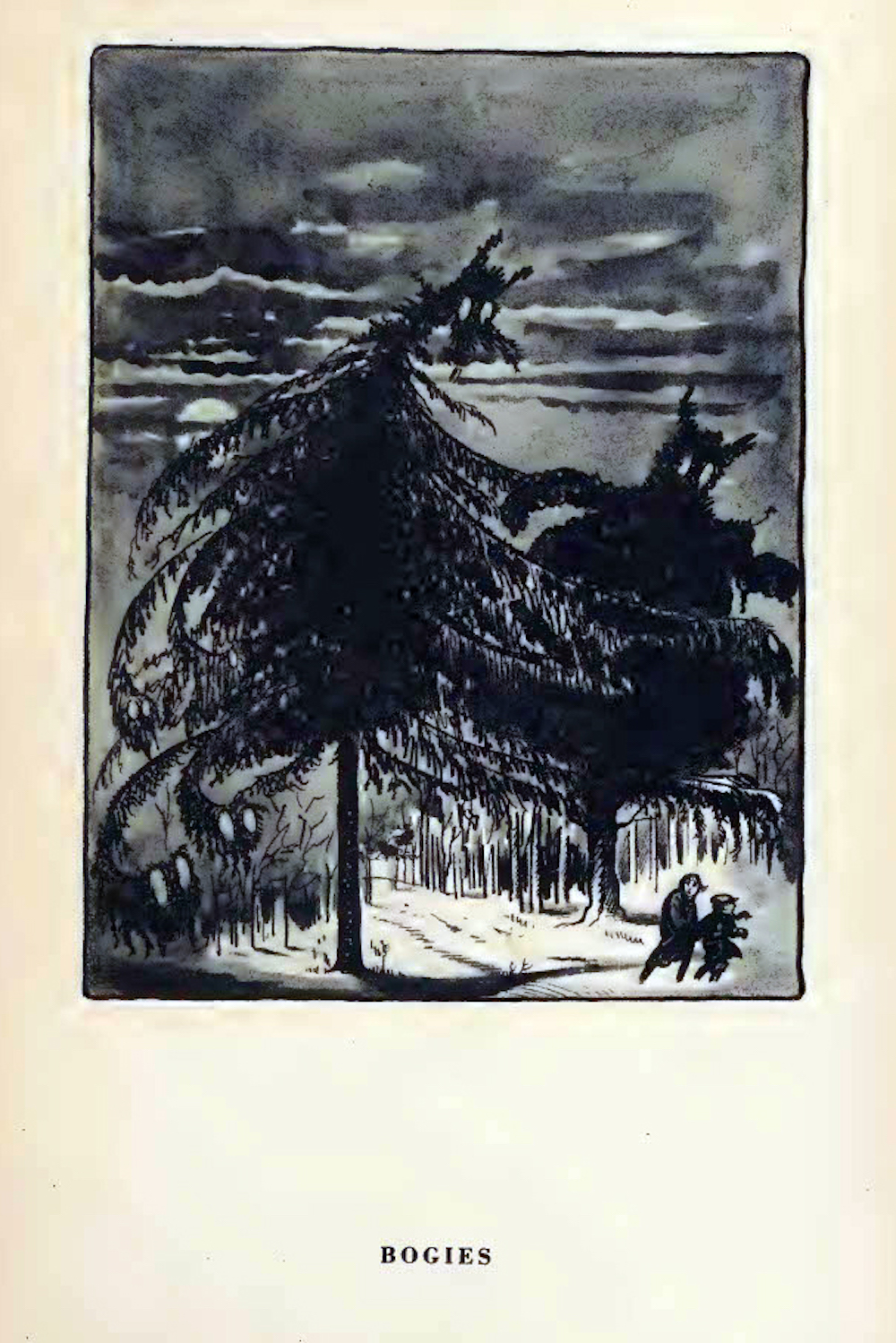
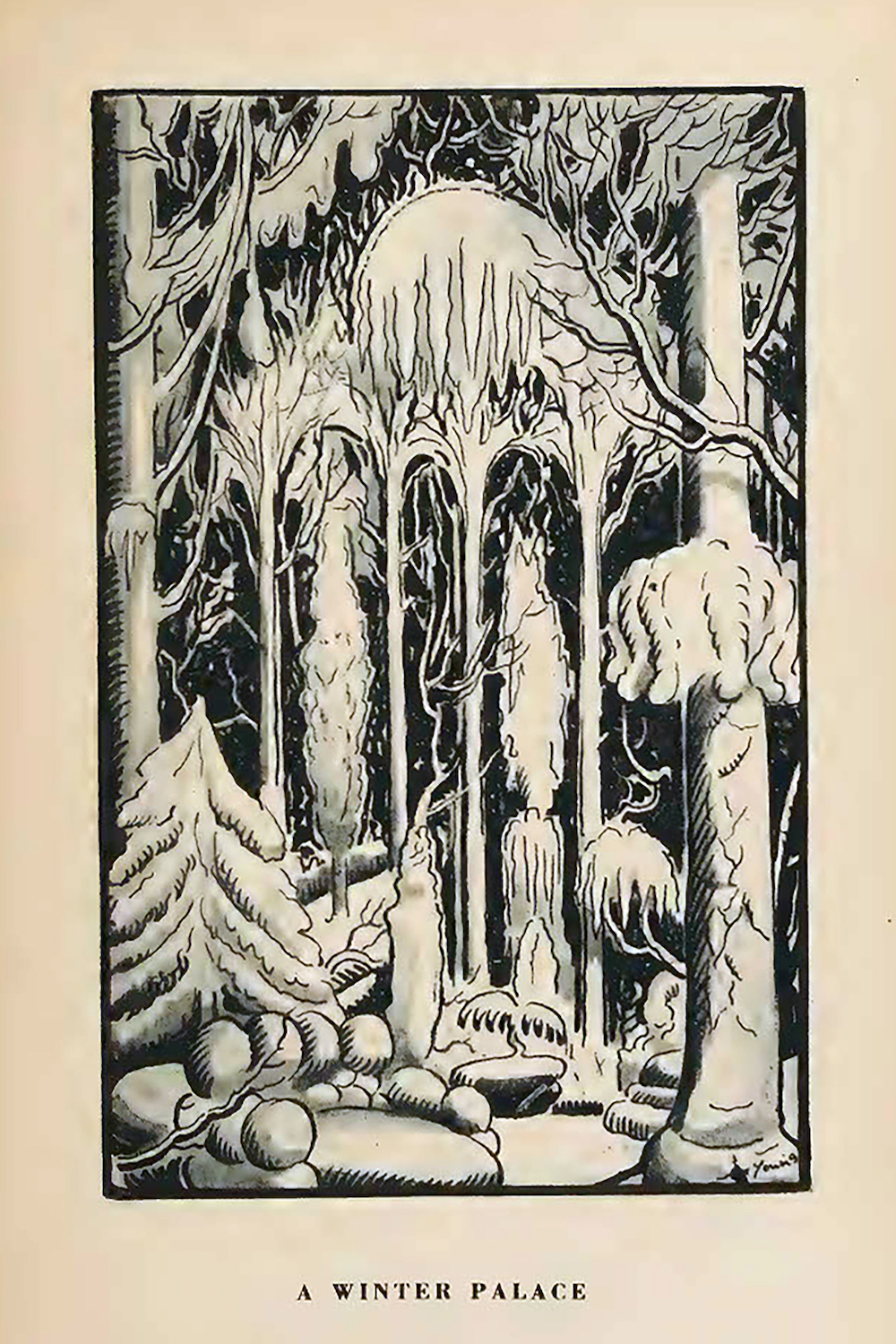

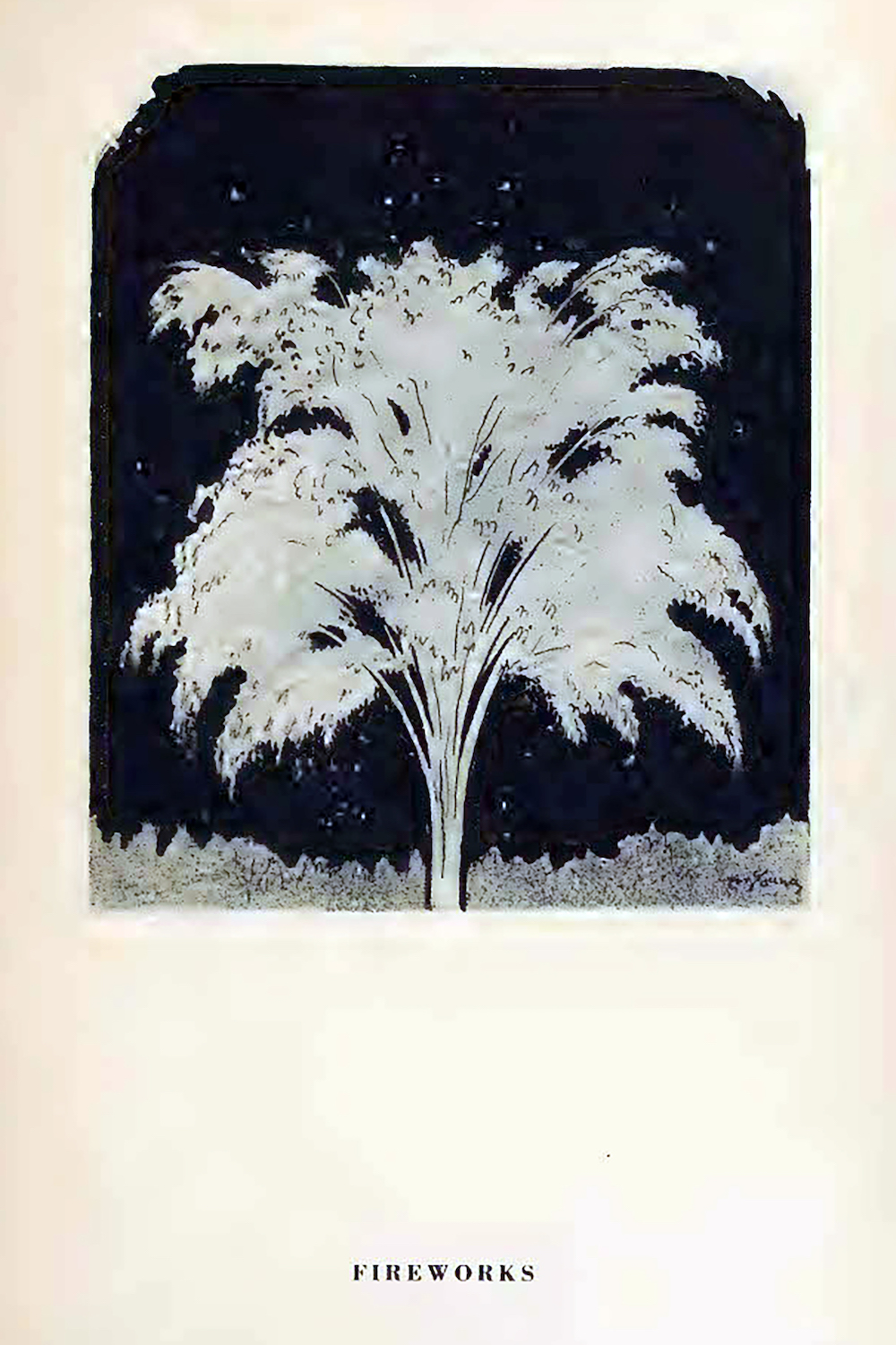
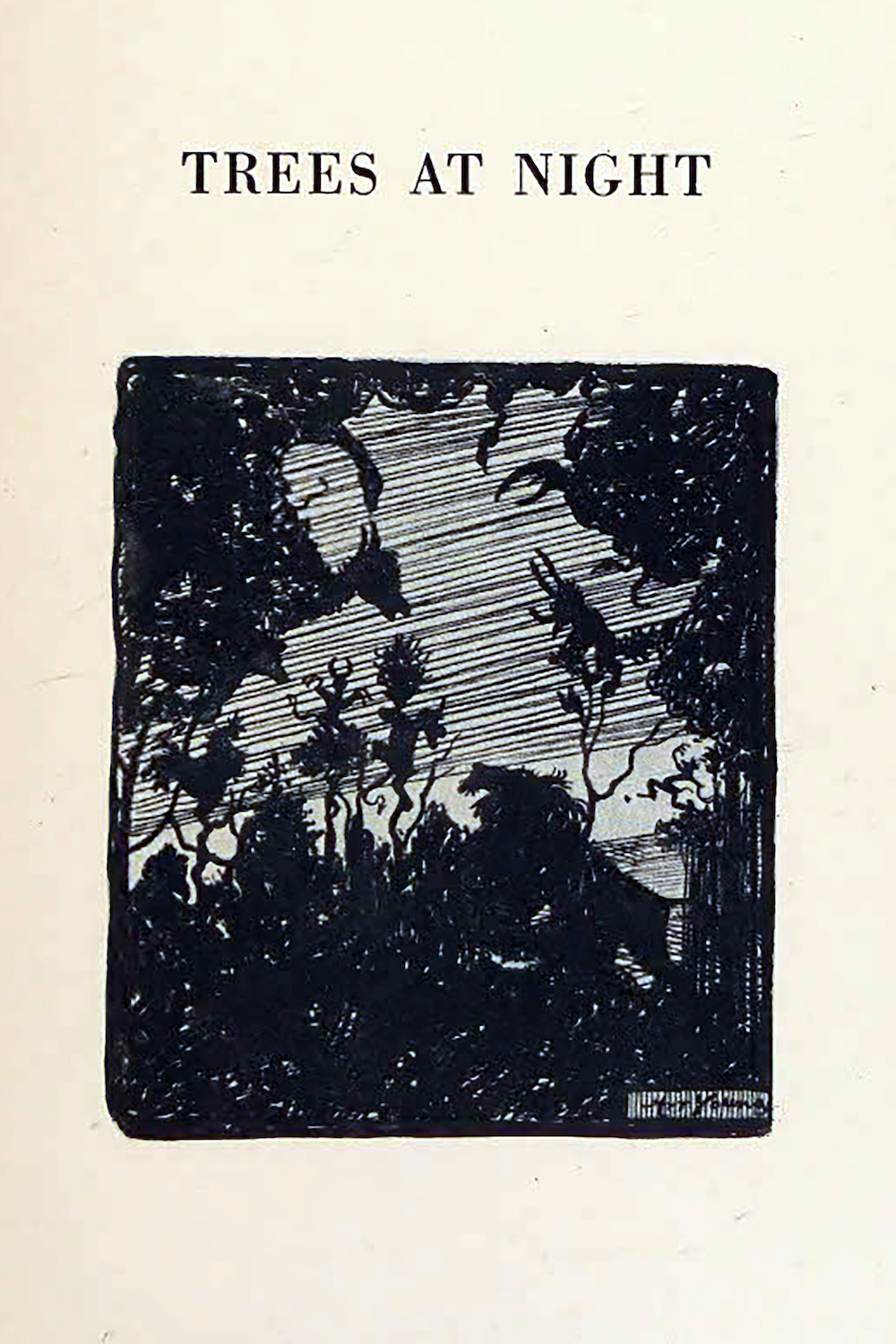
Would you like to support Flashbak?
Please consider making a donation to our site. We don't want to rely on ads to bring you the best of visual culture. You can also support us by signing up to our Mailing List. And you can also follow us on Facebook, Instagram and Twitter. For great art and culture delivered to your door, visit our shop.







